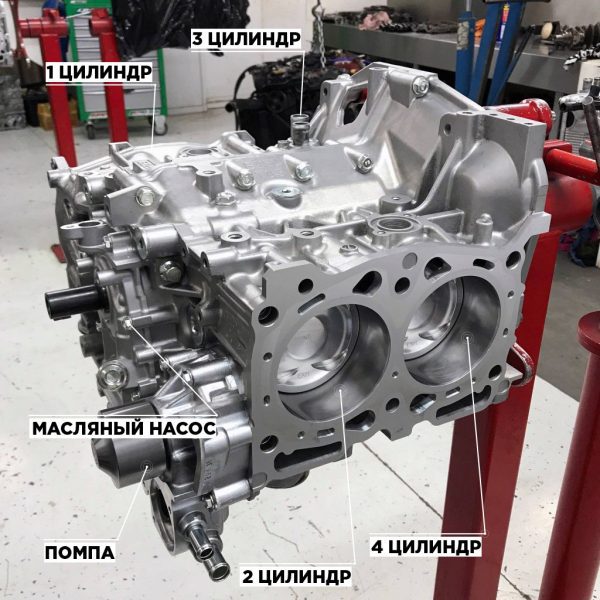
Four cylinders
Content
V-shaped, online or flat
V-shaped, in-line, flat, this engine does its best to offer the ideal configuration specific to each motorcycle. What are its qualities, defects, options? This time, motardus erectus, from repairedesmotards.com, walks on all fours.
4 cylinders. At this mention, we immediately think of the Honda CB 750, but long before that Ace then Indian, Pierce or Nimbus used 4-cylinder in line. However, they implanted them longitudinally, not transversely. Note that the same metamorphosis took place in the car. We switched from a longitudinal to a transverse engine for safety reasons. In the event of an accident, the longitudinal engine entered the cab, while with an equal bonnet length, the transverse engine leaves more of the crumple zone to absorb energy and blocks upon impact. But let's get back to our motorcycles ...
Four-cylinder in a transverse straight line
Yes, the four-cylinder transverse line is wide and that's a triple defect. On the one hand, and especially with an alternator at the end of the crankshaft, as in the past, it wreaks havoc on ride height. Aerodynamically, it enlarges the front surface of the bike, which penalizes its top speed. Finally, the long length of the crankshaft requires a massive structure to ensure its rigidity. This is a factor that increases his gyroscopic effect and does not contribute to the maneuverability of the bike he is equipping. However, with a few tweaks, it works wonders in GP, but elsewhere as well. Attacking from all directions, twins, three cylinders and even six cylinders, the four-legged defends itself with more than honor and even manages to gain a foothold by equipping new families of motorcycles. In short, he does not give up on the case, but on the contrary, he is even in the middle of his life.
Divide for a better rule
This is his motto. Indeed, when it comes to power, he is the master of the game. By separating its cylinders, it reduces its moving masses and thus can withstand high speeds, which is aided well by its natural balance. In fact, he develops specific strengths. Today, in the hypersport (series) category, the standard is over 200 horsepower / liter, which until recently was the preserve of racing engines.
V4 in all sauces
To fill in the imperfections of the built-in engine, the solution is to position the V-cylinders. Reduced engine width, which improves ground clearance, aerodynamics, while reduced crankshaft length reduces its mass and gyroscopic effect. This is the solution used by Honda and Aprilia, both in racing and on the road. KTM also uses it in MotoGP.
The size of the tall motor depends on the opening angle V, which also affects balancing. You can also play with crankshaft tuning and even crankshaft offset to change the explosive distribution and engine behavior. The disadvantage of a V-engine is its production cost because it requires two independent cylinder heads. This is what prompted Suzuki to abandon this architecture on their new sports car, although they used it in the GP (GSV-R 2003/2011). Indeed, the brand has always had marketing positioning based on good value for money. On the other hand, the Honda V4 is available in several configurations: trail running, road and even sporty.
Decisions made on the M1
On paper, four in line don't weigh against a V4. However, on the track, the M1 and GSX-RR are struggling with their V4 competitors. To achieve this result, Yamaha has fitted its engine with a counter-rotating crankshaft, the gyroscopic effect of which is the opposite of that of the gearbox, clutch and wheels.
Bing burst and screams
In width, the M1 can count on a double spade frame that extends over the cylinder heads rather than the perimeter, which contributes to aerodynamics. Finally, its engine uses the same tuning as the V-engines, which gives it a more direct response to throttle stresses due to a better overlap of inertia and pressure forces in the combustion chambers. Movement out of the curve wins. This new "bing bang" setting, which Yamaha also uses on its R1 road, contradicts the more traditional of the other 180 ° in-line fours, called "screams," which are louder and take up more laps.
Four apartments
Its most emblematic adaptation is probably seen on Honda's first gold fenders, 1000 and 1100. By utilizing a low center of gravity, the “flat stove” frees up space in height to accommodate a large, relatively low fuel tank. However, a solution that Honda did not retain on its gold, whose tank was under the saddle. The space above the engine was dedicated to a small storage box. Longitudinally positioned, the engine has been ideally positioned to use a secondary gearbox on the shaft, without reversing the angle between the engine and the transmission shaft, which reduces mechanical losses.
Sus on SUVs
In cars and motorcycles, the mod is designed for universal cars. In fact, SUVs (sports utility vehicles) are on the rise. On motorcycles, the analogue of his cars is called the BMW S 1000 XR and the Kawasaki Versis, both equipped with in-line four-cylinder. True to its motto, Honda excels at powering its Crossrunner and Crosstourer with a V4. Nice push from quadrupeds, which is finally the only engine investing in new segments, into an environment more accustomed to walking in circles with retro or neo-retro motorcycles than cleaning up new concepts. Finally, with all due respect to evolutionists, running on all fours is a concept full of the future!
